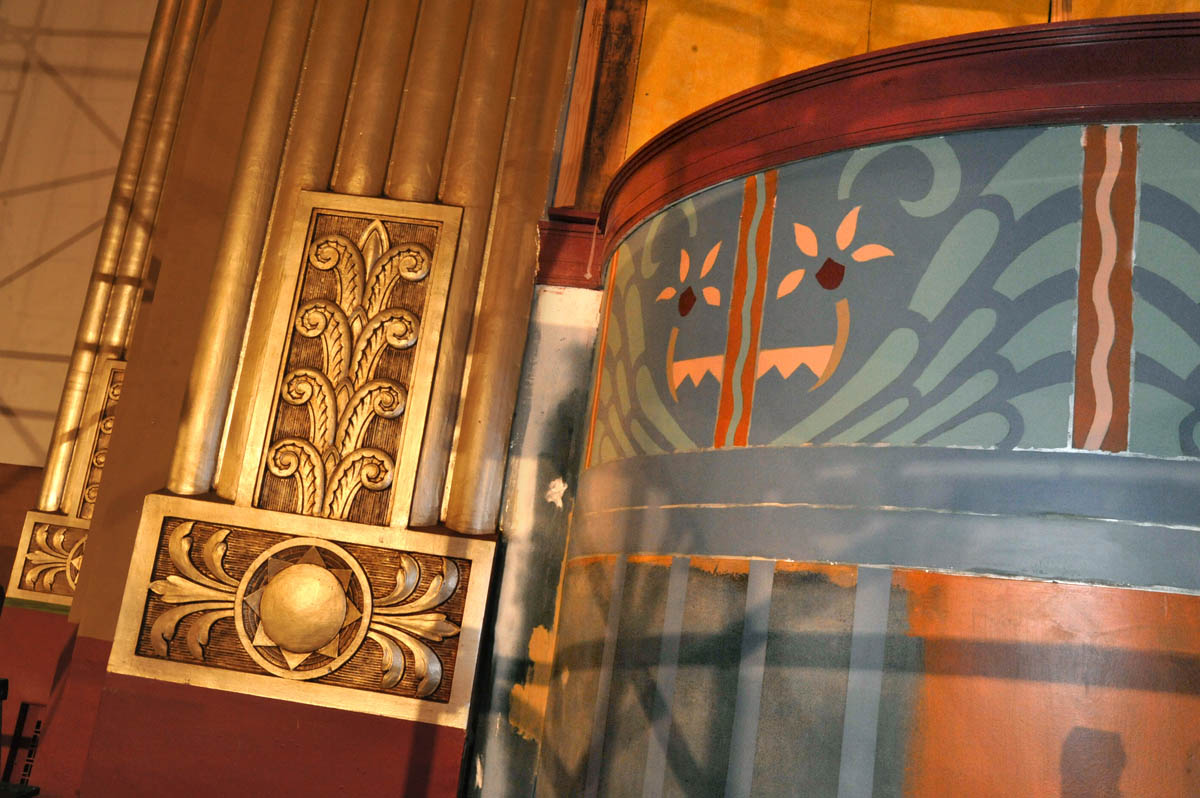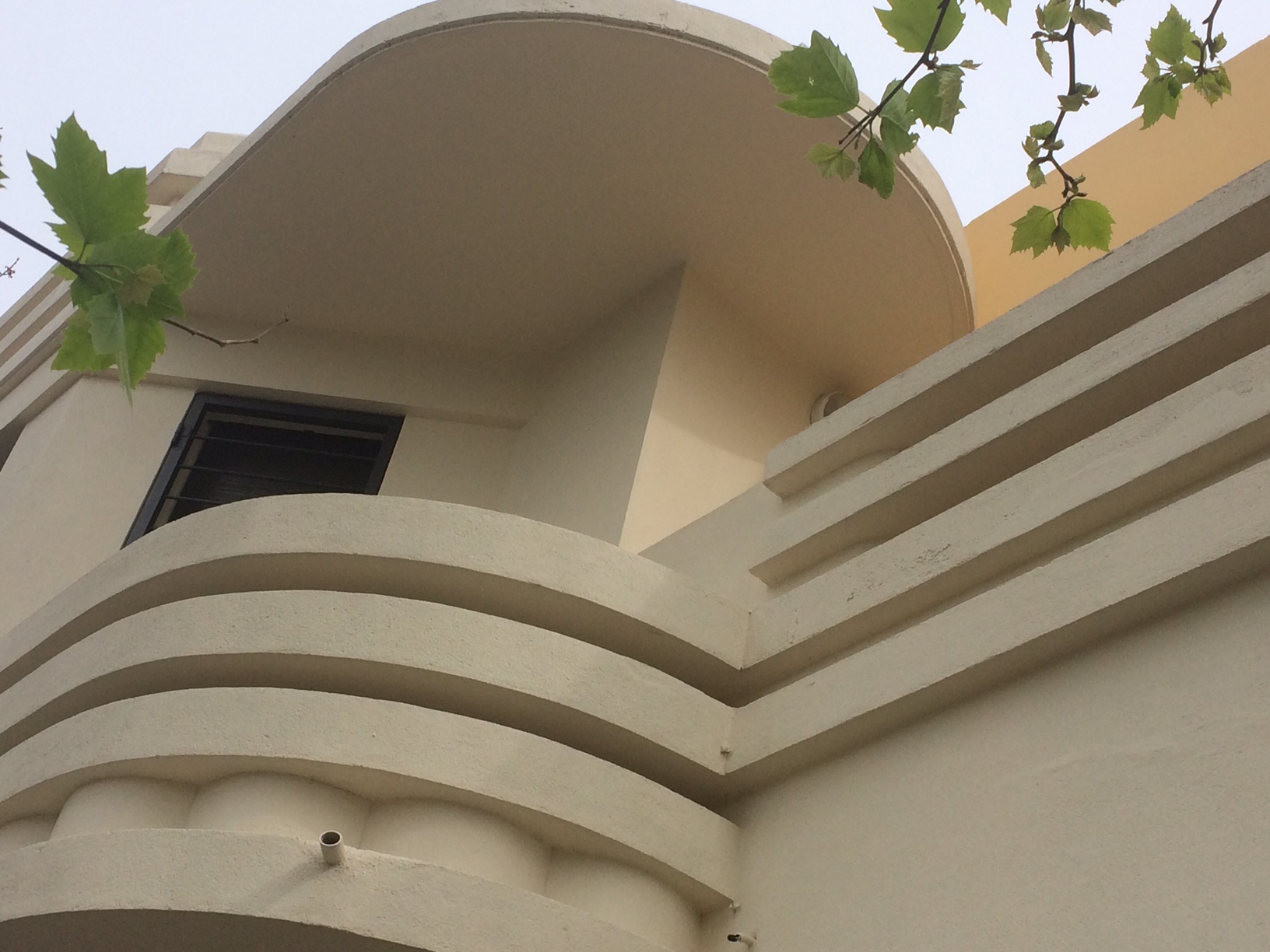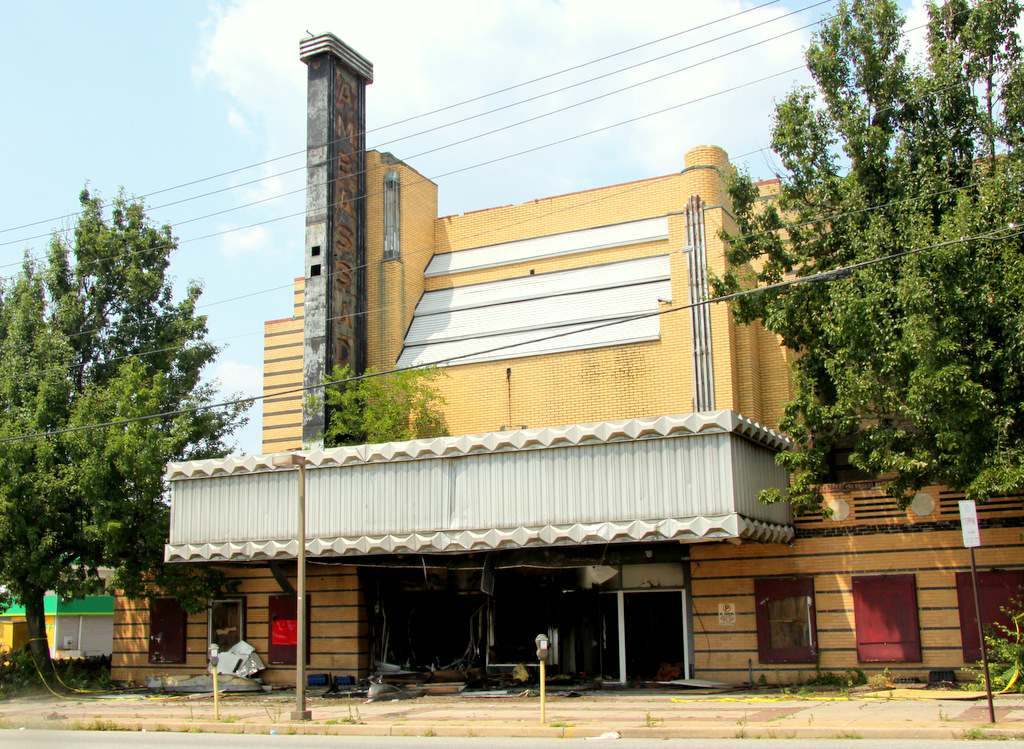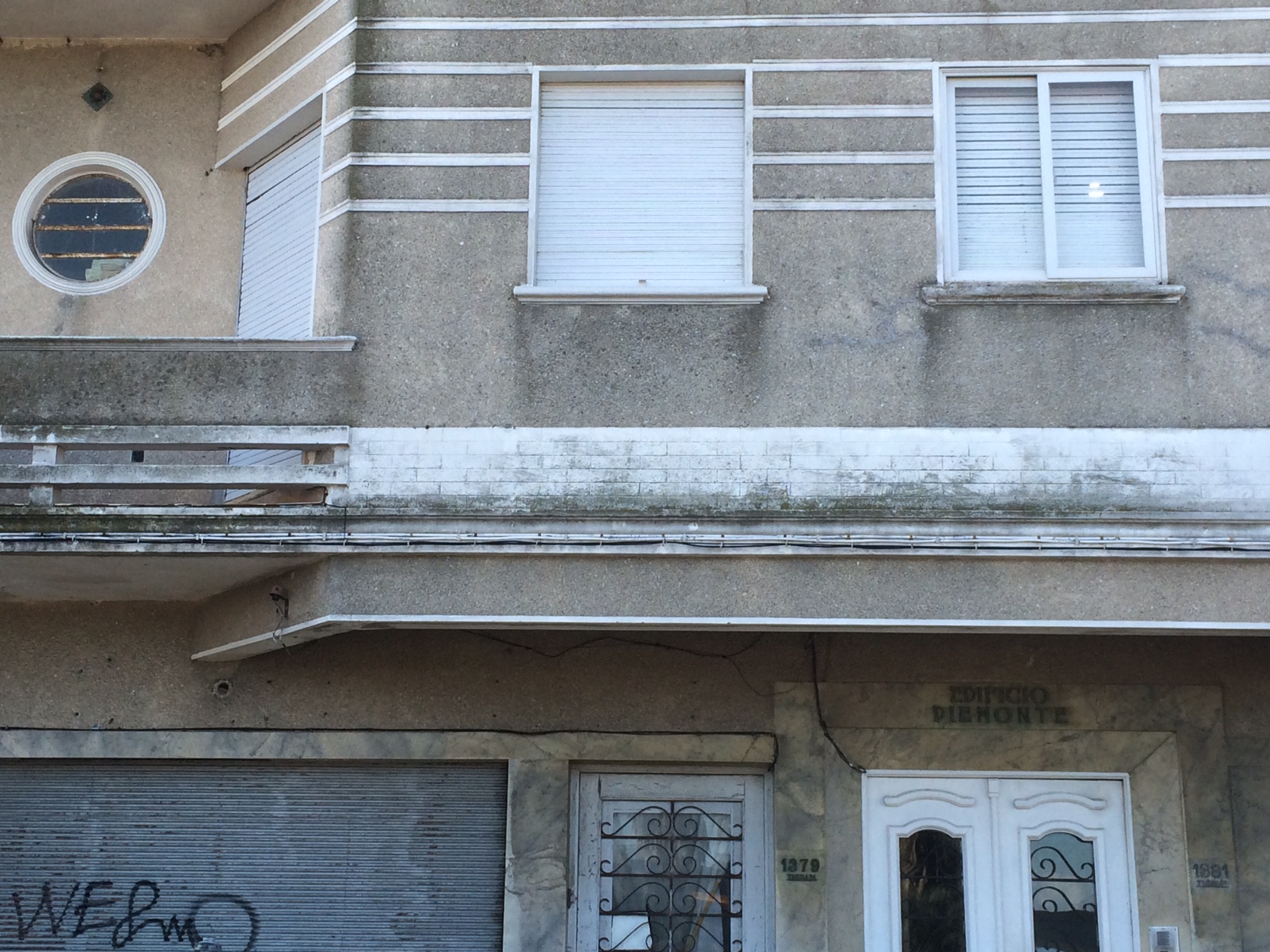Art Deco Across Time by Kerr Houston
The past few years have been rather good ones for local aficionados of Art Deco architecture. The Senator Theatre, whose bold, crisp lines embody late-1930s design principles, re-opened in 2013, after an 18-month renovation. Last year witnessed the publication of a handsome volume (by Richard Striner and Melissa Blair) dedicated to Deco buildings in Washington and Baltimore. And this past spring, the video and film arts departments of both Johns Hopkins and MICA moved into the restored Centre Theatre on North Avenue – a structure that won a major architectural prize when it first opened in 1939.
Local Art Deco structures are being given, then, new lives – and that’s arguably a pattern that holds more broadly, as well. Plans for an adaptive reuse of the iconic Indiana Dunes State Pavilion, which dates to 1929-30, were recently announced; in 2013, Amarillo’s stunning Art Deco courthouse turned heads when it was overhauled and modernized. In England, plans to renovate the Saltdean Lido are now in place; in Paris, Le Lutetia (a luxury hotel whose guests have included Picasso and Joyce) is closed for a three-year facelift.
In short, there seems to be a good deal of interest in preserving and renewing Art Deco structures. And why not? After all, the values associated with Art Deco – speed, cosmopolitanism, mobility, and a promiscuous eclecticism – are ones generally celebrated in the Internet Age, as well.
 Detail of the restored Senator Theatre
Detail of the restored Senator Theatre
A moment’s thought, though, leads to a further realization: that it’s extremely rare to enter an Art Deco structure that has not been heavily restored or altered. Functioning Art Deco buildings, rather, usually owe their continued existence to an intricate life support system fashioned from a mix of consortiums, public grants, and redevelopment schemes. Indeed, some of the most famous efforts in the history of architectural preservation have been centered around Art Deco districts and structures: think of the Miami Design Preservation League, which took shape in 1976 and led to the celebrated renewal of South Beach, or of the Los Angeles Conservancy, which came into being two years later as part of an effort to preserve the Los Angeles Central Library. The Art Deco architecture that we know and love, in other words, is in fact usually a heavily modified version of the original. When you think of great Art Deco sites, you’re likely thinking of consciously maintained structures.
That fact, in turn, might well have surprised the designers of the very structures now being restored – for they worked in a period in which planned obsolescence was taking firm shape as a concept, and limited lifespans were actively promoted in corporate circles as a basic good. After all, it was in the 1920s that Harley Earl (a legendary designer who worked for GM) and Alfred Sloan implemented what they labelled dynamic or progressive obsolescence: that is, the idea that designed objects should have a limited life span and should soon give way to newer and improved models. By the late 1920s, as Giles Slade has pointed out, progressive obsolescence had become “an expressive and powerful concept,” and Christine Frederick’s 1929 Selling Mrs. Consumer offers a case in point:
Women are far heavier consumers of personal goods than men, utilizing the principle of obsolescence far more frequently and naturally. Second, [there is a] greater love of change in women. We are only beginning to see that there is tremendous significance in all this; and that America’s triumphs and rapidity of progress are based on progressive obsolescence.
Such assertions were commonly made regarding automobiles, or appliances, or cameras. But did they apply as well to architecture? Apparently so. As early as 1914, in fact, the Italian architect Antonio Sant’Elia had declared that the twentieth century called for “a reformulated modern city” – one that opposed, among other things, historical preservation. Truly modern architecture, for Sant’Elia, was to be characterized by “obsolescence and transience.”
And not only for Sant’Elia: as Christina Codgell and others have argued, the streamlined forms of Art Deco structures can also be seen as elements in a consciously devised program of production and consumption. Indeed, Ellen Lupton and J. Abbott Miller have interpreted streamlining as an “excretory aesthetic,” visually and thematically associated with excess and waste products. Put it however you want: in point of fact, sustainability and longevity were simply not central terms in discussions of architecture in the Flapper Era. Rather, it was their very opposites that dominated the discourse.
All of which is to say that the current moment is an interesting one, as we renovate structures that were designed in an era that largely scorned the notion of longevity. It’s rather as if we were proudly driving a Model A even as we paid considerable sums to have its engine and chassis completely overhauled, or as if we were paying to have the blades of a disposable razor carefully updated and replaced.
Of course, such analogies are slightly whimsical, for architecture has always represented a partial exception to more general patterns of obsolescence, due to the uniquely high cost of replacing a building. Buildings benefit from an inertia born of simple economic pragmatism. But, as Mimi Zeiger recently pointed out, they also benefit from our romantic wish that they could be truly permanent – or, in her words, from “a lingering sentimental belief that architecture is an exception to the rules of obsolescence.” They benefit, in other words, from the very sort of sentiment that was condemned in the age of Art Deco.
 Detail of a Montevidean facade
Detail of a Montevidean facade
I’ve been thinking about such paradoxes for a few weeks now – weeks that I happen to have spent in Montevideo, Uruguay, which boasts one of the largest samplings of Art Deco structures in the entire world. In those weeks, I’ve come to wonder what might happen if we followed the implicit directives of the period behind the architecture, and embraced obsolescence. What would an Art Deco architecture look like, that is, if it were allowed to follow its more natural course? And how might that inform, in turn, our parallel ongoing efforts at restoration?
The answer is not wholly pretty. Of course, you don’t have to fly to Montevideo to begin to sketch it: rather, you can simply head to Baltimore’s Liberty Heights Avenue and the venerable Ambassador Theater, which was badly damaged in a 2012 fire after standing empty for several decades. Or you could check out the façade of the former Hutzler Brothers Palace Building on Howard Street. When completed in 1931, it fronted the city’s best-known department store – but its doors are now boarded up, its walls littered with posters. Or you could head to Read’s Drugstore, a Deco building that was the site of a significant civil rights protest in 1955 – but that is now in a state of utter disrepair, its roof collapsed and its floor joists rotted. Such buildings could fairly be called obsolete, no doubt – but their obsolescence isn’t due merely to a love of change, or a sense that they are outdated. Rather, it’s the result of larger forces: white flight, for instance, and urban blight. Such buildings have little to say, ultimately, about planned obsolescence; instead, they are stark emblems of systemic poverty and fear.
But what, then, of aging Art Deco structures that have remained in relatively consistent use? What might obsolescence mean in a neighborhood not beset by urban blight? Here, South Beach can offer the start of an answer – and, again, it’s not entirely positive. Thus, when the English writer Geoff Dyer checked into the Beachcomber (one of several Art Deco boutique hotels on Collins Avenue) several years ago, he quickly discovered that the handsome façade concealed a more shabby reality:
When we drew back the curtains the Art Deco spell was broken. The window was cracked, grimy, and the surge of dusty sunlight revealed a damp patch spreading across the carpet from the bathroom wall almost to the centre of the room. Then a mouse raced across the marshy carpet and squeezed, with difficulty, under the skirting board of the cramped and mouldy bathroom.
Is this obsolescence? In bluntly physical terms, sure. Ultimately, however, Dyer was less appalled by the grim shabbiness behind the colorful façade than by a growing sense that Art Deco is the façade. “Art Deco,” he continued, “is the most visible of architectural styles, arranged entirely for the eye – it’s in color! – rather than to be inhabited.” Viewed in such terms, Art Deco is a mere surface, a varnish rather than a real architectural philosophy. The spell is broken – and so Art Deco suddenly seems stylistically, as well as physically, obsolete.
But wait a minute. Despite Dyer’s assertion, people do in fact live in Art Deco structures. Indeed, he clearly knows this too: “Art Deco buildings are inhabited, of course, but whereas, from the outside, they look extraordinary, inside, the experience is fairly ordinary.” Now, as a tourist in a hotel, Dyer understandably uses the term ordinary in a generally pejorative sense: he expects more. But for the thousands of people who live permanently in Art Deco structures (rather than seeking a room in a hotel, for a night or two), ordinary can of course mean perfectly acceptable. Moreover, the relentless ordinariness of aging Art Deco structures offers a counterpoint to the flashy pronouncements of Flapper Era philosophers. They force a question: can structures designed in an age that celebrated constant novelty and replacement succeed when they come to seem merely ordinary?
Here’s where Montevideo may have something to offer. A city of 1.5 million, it’s home to literally hundreds of surviving, functioning Art Deco structures that are arguably perfectly ordinary, and yet manage to contribute to the city fabric. Look around: on the façade of the Edificio Piemonte, dangling wires mar the crisp streamlined details, and a tagger’s scrawled signature undoes the neat geometry of the lower story. Yet a light bulb burns, inside. On Avenida Colonia, the pastel shades of adjacent Art Deco houses are complicated by the addition of a small American flag, and the rigid geometry of the roofline – ziggurat-inspired chevrons, at regular intervals – violated by a satellite dish. Still, the units are occupied. East of Parque Battle, the elegant surfaces of the Hospital de Clínicas (which was designed in 1928-9) bear witness to decades of air pollution, even as the facility handles hundreds of patients on a daily basis.
This is, you might say, Art Deco as truly ordinary: Art Deco architecture that is not subject to the careful work of preservationists or to the haphazard negligence of a cynical hotelier. It’s neither pristine nor famous – but that’s the point. It’s merely architecture, left to run its own course. Certainly, these aging Art Deco structures don’t look exactly as their designers intended: laundry lines and air conditioning units violate their originally immaculate logic. But there’s a certain appeal in that fact, as well. After all, as the architectural critic Ada Louise Huxtable once pointed out in a piece on New York City architectural icons, those changes result from actual use and are themselves a meaningful part of the buildings’ histories. “These alterations,” she concluded, “have authenticity, interest, and charm, and are part of a neighborhood’s history and style.”
Granted, this is hardly what theorists in the 1920s meant by obsolescence. Those writers tended to promote constant newness, advocating the regular replacement of aging models. But I would argue that the Art Deco buildings of Montevideo (or Havana, say, or Buenos Aires) point the way towards a more humane and cost-effective attitude, in which buildings are allowed to age – and perhaps, in time, to fail. Consider, for example, the Palacio Salvo, a 1928 structure in downtown Montevideo that was once the tallest structure in South America. Its extensive use of reinforced concrete was revolutionary at the time, but now the exterior is flaking, and the iron supports visible. The Baltic oak used in the trim has weathered considerably. One of its prime apartments, in one of the four turrets, is permanently unoccupied.
And yet, again, the charm of the structure is not diminished as a result. In fact, you could even argue that it’s enhanced. Perhaps it’s a stretch, but I’m reminded in this context of the battered surfaces shown in Star Wars, which was visually exciting in part precisely because it implied a view of a futurism that had apparently succumbed to actual usage. Similarly, there’s something to be said for an aging movie star whose face betrays experience, rather than the work of cosmetic surgeons.
Or, more to the point: I spoke with two residents of the Palacio Salvo, and both seemed almost giddy about their good fortune in living in such a historically significant tower. Sure, the structure has aged, and not always for the better. And, sure, there are discussions about possible renovations. But for the moment, the Palacio Salvo seems to stand as one of many hundred proofs, scattered across Montevideo, that structures built at the precise moment when obsolescence was first becoming a byword still appeal, even as they give way to newer idioms and ideals. There are worse fates, it would seem, than obsolescence.
None of this is to say that the current interest in renovation and reuse is misplaced. When executed thoughtfully, renovation can be a solid, defensible approach that foregrounds cultural patrimony and avoids waste. Moreover, it’s often a sign that things are going well in other directions, as well. As Huxtable pointed out, “old buildings survive because it rarely makes sense in bad times to demolish, while in good times there is every incentive to invest.” The Centre Theatre, in other words, is not just a splashy addition to the Station North Arts District; it’s also a positive indicator, a vote of confidence in the future of that district.
But maybe, as Zeiger has suggested, there’s also something to be said for embracing obsolescence – or, at least, obsolescence in a limited, pragmatic sense. Inevitably, our older buildings no longer look as they did when they were drawn up on an architect’s table. Like us, they age – and not always for the better. Still, such structures bear in their scars a significance that does not always deserve to be concealed, or effaced, or replaced with an entirely new structure. Simply demolishing such structures, in order to enforce a progressive obsolescence, is hardly as palatable as writers in the 1920s may have made it sound. But neither, necessarily, is overhauling and transforming them. The new is only new for so long. We do well to embrace the aging, even as we applaud the recent changes to some of Baltimore’s Art Deco icons.
Author Kerr Houston teaches art history and art criticism at MICA; he is also the author of An Introduction to Art Criticism (Pearson, 2013) and recent essays on Wafaa Bilal, Emily Jacir, and Candice Breitz.











